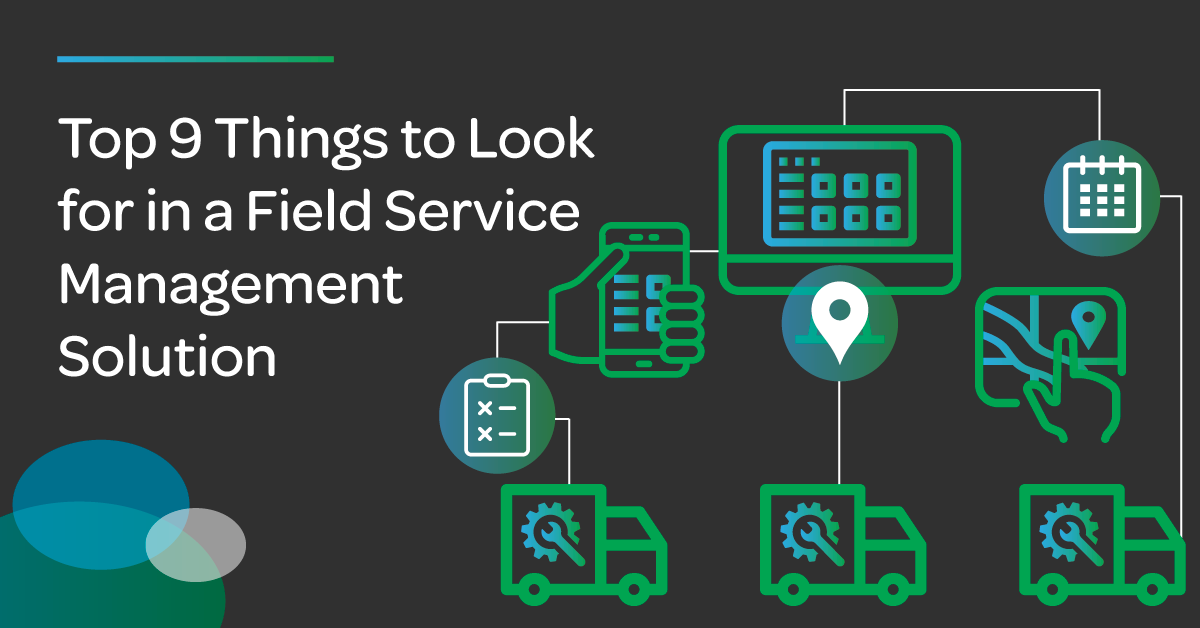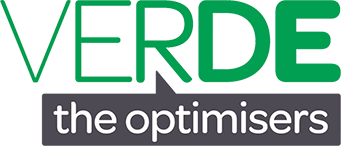
Companies that service equipment need to make the best use of available resources, provide exceptional service, and make a profit. A well-designed and properly implemented Field Service Management solution can help you accomplish that.
With the right technology tools, you can modernise your operations, boost your efficiency, and develop lasting customer loyalty.
When searching for the right Field Service Management solution, you should focus on the following 9 functional areas where Field Service Management (FSM) is most needed, and where it can provide the most benefit.
Deploying service resources – people, equipment, parts – is the essence of field service. Scheduling and dispatching are the key functions of Field Service Management solutions. You’ll want a solution that can schedule emergency and short-notice calls, along with regular and previously scheduled service calls. This minimises travel time while providing the quick response and schedule reliability that customers demand. The solution should integrate mapping and GPS to allow the scheduling team to see the impact of potential responses to emergency repair requests, helping them determine the best way to respond to the change in priorities.
Scheduling and dispatching functions should be integrated with the repair and maintenance history of each customer and each piece of equipment as well as inventory tracking. This ensures that the right parts and equipment are dispatched along with the technicians so they can get the job done with no delays.
Modern field service resources must be mobile-enabled. Mobile technology helps field technicians stay in touch with changing schedules; makes equipment information, usage, and repair history instantly available on-site and on the way; reduces or eliminates hand recording of time spent, parts used and history updates; makes reporting for billing purposes instantaneous and more accurate; and more.
Mobile devices should be capable of real-time connection to the host system to display dispatching changes and traffic information to provide the best current route to the next customer site.
Tracking installed equipment and its service history helps make service operations more efficient and more effective, of course, but there’s more to be gained from detailed equipment tracking. Having that information available to assist in the provisioning of mobile inventory, as a base for tracking maintenance and repair history (linked to equipment engineering and use data for analysis, planning, and product improvement), and keeping records for warranty purposes are all obvious and important needs. But, there’s even greater value available.
Equipment service history is a critical part of Product Lifecycle Management (PLM). Serial number tracking is even more important in support of engineering studies and product improvement efforts, as well as being a necessary part of the response to litigation or product recall. The serial number is also part of the basic equipment identification that supports configuration history (as-is configuration to compare to as-built and as-designed). Equipment tracking and service history are an important component of preventive and predictive maintenance. A supplier that helps its customers stay on top of certification and calibration records will be considered a valuable partner.
And don’t minimise the importance of this traceability on customer service. Imagine how the customer will feel when they call in and the service rep has all their equipment information right in front of them. You can help your customers keep their equipment running smoothly and reliably while making it easy for them in the process. This type of interaction is important as it makes you a partner in the safe and effective operation of their equipment.
It is important to control and track inventory of tools and repair parts spread across multiple vehicles and warehouse locations. Your system should help you determine the best locations and quantities to hold to provide the best coverage at the lowest cost. Inventory can be deployed/relocated in conjunction with scheduling and dispatching, to ensure that service technicians have what they need, where and when they need it so as not to waste time and be able to complete assigned tasks. With integrated inventory and purchasing, replenishment orders can be shipped to a specific location and, when the parts arrive, the dispatcher can schedule the service appointment for installation.
Integration with in-house systems like ERP and financial/accounting eliminates delays and errors from manual entries or re-keying. The benefit is multiplied when mobile device entry from the field is included. Billing is fast and accurate, good audit trails and history are maintained with ‘one version of the truth’. The resultant unified database can be exploited for ongoing improvements and savings, reports and measurements including KPIs.
Integrated FSM and ERP keeps everyone one the same page by providing company-wide visibility of customer activities, inventory usage and status, and equipment performance. Billing and collection are timelier, improving cash flow. Financial records are complete, accurate, and immediately updated as activities are completed.
Your FSM solution should not limit or impair your ability to create and process invoices in compliance with all the variations in contracts and relationships you might have with customers. For example, it should be able to assemble and process billing: by project for design and implementation; for recurring revenue for service contract and preventive maintenance; by time and materials for repairs; consolidated billing for multi-site clients or centralised payment situations. Be sure that the financial functions can track and properly recognise warranty terms so billing (or more importantly, non-billing) for parts and service are correct.
FSM, in conjunction with ERP, manages a wealth of data about equipment usage and performance, repair and maintenance needs and activities, costs and revenues for labour, materials and equipment, costs and needs for warranty coverage, customer relationships, inventory deployment and usage, and much more. Your enterprise information infrastructure should enable the exploitation of that veritable ocean of data to create more value from your Field Service Management solution. Analyse the data and look for patterns and intelligence. Cross-reference repair history with usage information, location, or design details to gain insight into the validity and effectiveness of preventive maintenance and either change policies and warranties or advise customers to help them get more from their equipment investment. Optimise inventory placement and deployment. Provide valuable feedback to design engineers to improve future product performance and reliability… and much more.
The analytical capabilities can stem from an ERP module or application, a feature of the FSM solution, or a third-party analytics product. No matter the source of the capability, its effectiveness will rely on the quality and unity of the database your FSM and ERP will be building. Ideally, that database is fully integrated across both ERP and FSM with no redundancy, overlap or duplicate entry. That structure should be a prime objective as you review and consider FSM solutions.
The core of FSM is work order management for both the office and the customer – the office is able to outline what the customer requests are, giving the technician the right information to complete the job.
This digital trail is the most basic utility provided by FSM, but it’s also one of the most powerful utilities that keeps businesses and their employees safe from legal liability in a number of ways.
By using a FSM solution, technicians can attach photos, videos, inspection forms and more to the work order – visual proof of the work completed. Many FSM solutions have geo-tracking for mobile devices. This allows system administrators to see where their technicians are throughout the course of the day. Some field service applications provide an audit log for work orders and customer records – which allow business owners to see a full history of how a work order has been edited.
When it comes certain situations like medical equipment, commercial kitchens or elevators, the distributor or manufacturer may need to regularly certify systems and equipment for factors such as health and safety. This is an important part of preventive maintenance.
A FSM solution should document these important certifications and ensure everything is up-to-date. Expired certifications and compliance create major legal issues for customers. A supplier that helps customers stay on top of these requirements will be considered a valuable partner.
Being able to see the progress of daily jobs in real time brings huge benefits to many departments of a field service business. Generally, after a technician has picked up their job folders, and left the office in the early morning, their whereabouts and job completion statuses remain largely unknown. Whilst some technicians proactively update the office via phone calls or emails in the field, many do not, which can cause confusion and create additional work for office-based staff.
A FSM solution should offer a dedicated mobile app that is used by technicians to capture real time information in the field. Because these apps are designed to run on mobile devices, schedulers can use the technology built into the devices to capture information about the field technician’s location, movements and availability. Additionally, in the case of urgent job, the scheduling team can see a live map of technicians, as well as their current job status to they can assign any unexpected jobs to the closest qualified technician. This improves turnaround time and empowers businesses to deliver outstanding customer service.
If your field service management software is native to your ERP or business management platform, any updates saved on the mobile device should be synchronised in real time, which means back-office staff will have live information on their dashboards and reports. This will provide customer service representatives with live information to provide proactive support, communication and service to your clients.
In the field service business, the primary areas for management attention that can be greatly improved with the right technology include scheduling and dispatching, tracking installed equipment, inventory management, and accounting/administrative. A well-design and integrated Field Service Management solution is an essential tool for managing the service side of the business to control costs, deliver needed service efficiently, and keep customers happy.


.png?width=2300&name=mediamodifier_image%20(13).png)


